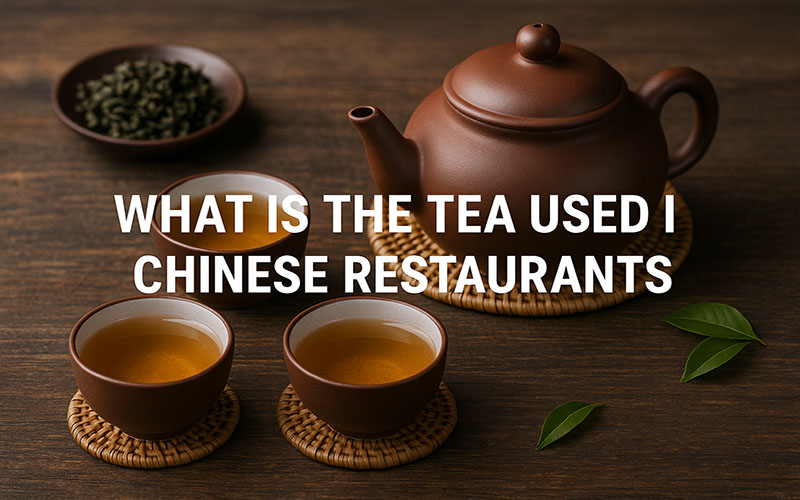
If you’ve ever sat down at a Chinese restaurant and been greeted with a warm cup of tea, you’re not alone. Tea service is a cherished part of Chinese culinary tradition, often offered before menus are even brought to the table. But have you ever wondered what kind of tea is used in Chinese restaurants? It’s a common question, and the answer is steeped (pun intended) in both culture and taste.
When dining at many Chinese restaurants, especially in Western countries, Jasmine tea is the most frequently served. It’s a type of green tea that’s scented with jasmine blossoms, offering a delicate floral aroma and a smooth, slightly sweet flavor.
Jasmine tea has a subtle fragrance that doesn’t overpower the palate, making it a perfect complement to a variety of Chinese dishes. Its lightness helps cleanse the taste buds, especially between bites of spicy or oily foods like General Tso’s chicken or beef with broccoli.
Though Jasmine is the most popular, it’s not the only tea you might encounter. Here are a few others commonly offered:
Oolong tea is partially fermented, placing it somewhere between green and black tea in terms of oxidation. It has a richer, more robust taste than green tea, with slight notes of fruit, nuts, or flowers depending on the variety.
Restaurants that serve dim sum, particularly in Cantonese traditions, often offer oolong tea as it helps digest heavier dishes like pork buns or fried dumplings.
Pu-erh (pronounced “poo-air”) is a fermented dark tea from China’s Yunnan province. It’s earthy, bold, and known for its digestive benefits.
This tea is especially favored in more traditional or upscale Chinese dining establishments. Some believe it can cut through the grease of rich foods, making it ideal for meals heavy in meat and oil.
Though not technically a “tea” in the green or black sense (it’s a herbal infusion), chrysanthemum tea is popular in many Chinese dining scenarios. It’s made from dried chrysanthemum flowers and is caffeine-free, with a bright, floral taste and a golden color.
It’s often served at banquets or for older guests who prefer a lighter, non-caffeinated beverage. Sometimes, it’s even mixed with Pu-erh for a unique combination.
A variant of Pu-erh, Bo Lei tea is often found in Cantonese dim sum restaurants. It’s known for its deep, mellow flavor and reddish-brown hue.
It’s frequently served without asking—your teapot is simply filled and refilled throughout the meal.
In most Chinese restaurants, especially in the U.S., hot tea is complimentary. It’s considered a gesture of hospitality. However, some establishments may charge a small fee per person, especially if they offer premium varieties or tea refills.
Tea in Chinese restaurants is usually brewed in large kettles and served in plain porcelain teapots. The leaves might be loose or in tea bags, depending on the restaurant’s scale and style.
The water temperature is typically quite hot—Chinese tea is meant to be sipped slowly, not gulped down.
In higher-end restaurants, you might even find traditional gongfu-style tea preparation, where small teacups and special clay teapots are used for an immersive, ceremonial experience.
Many of the teas served in Chinese restaurants come with health perks:
So, what is the tea used in Chinese restaurants? Most commonly, it’s Jasmine tea, thanks to its light, fragrant nature and wide appeal. But depending on where you eat, you might also be sipping on Oolong, Pu-erh, or even Chrysanthemum.
Next time you enjoy a meal at your favorite Chinese spot, take a moment to appreciate that soothing cup—it’s more than just a beverage; it’s a tradition steeped in centuries of culture and care.










© InfoDoot. All Rights Reserved.